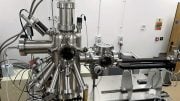
Recent findings indicate that marine cloud brightening, a method of increasing cloud cover to cool the Earth, could be more effective than previous models suggested, offering significant cooling effects but serving as a temporary mitigation rather than a solution to global warming.
New research suggests that cloud “engineering” might be more effective at cooling the climate than previously believed, due to the production of increased cloud cover.
In a study published in Nature Geoscience, researchers at the University of Birmingham found that marine cloud brightening (MCB), also known as marine cloud engineering, works primarily by increasing the amount of cloud cover, accounting for 60-90% of the cooling effect.
Previous models used to estimate the cooling effects of MCB have focused on the ability of aerosol injection to produce a brightening effect on the cloud, which in turn increases the amount of sunlight reflected back into space.
The practice of MCB has attracted much attention in recent years as a way of offsetting the global warming effects caused by humans and buying some time while the global economy decarbonizes. It works by spraying tiny particles, or aerosols, into the atmosphere where they mix with clouds and with the primary aim of increasing the amount of sunlight that clouds can reflect.
Practical Applications and Research Challenges
Experiments with the technique are already being used in Australia in an attempt to reduce bleaching on the Great Barrier Reef. However, the ways in which MCB creates a cooling effect, and the ways in which clouds will respond to aerosols, are still poorly understood, because of variable effects such as the confounding from co-varying meteorological conditions.
To investigate the phenomenon, the researchers created a ‘natural experiment’, using aerosol injection from the effusive eruption of Kilauea volcano in Hawaii to study the interactions between these natural aerosols, clouds, and climate.
Using machine learning and historic satellite and meteorological data, the team created a predictor to show how the cloud would behave during periods when the volcano was inactive. This predictor enabled them to identify clearly the impacts on the clouds that had been directly caused by the volcanic aerosols.
They were able to show that the cloud cover relatively increased by up to 50% during the periods of volcanic activity, producing a cooling effect of up to -10 W m-2 regionally. Global heating and cooling is measured in watts per square meter, with a negative figure indicating cooling. Note that doubling CO2 would lead to a warming effect of +3.7 W m-2 approximately on a global average.
Collaborative Efforts and Implications of Research
The research was carried out in collaboration with the Met Office, the Universities of Edinburgh, Reading and Leeds, ETH Zurich in Switzerland, and the University of Maryland and NASA in the USA.
Lead author, Dr Ying Chen, of the University of Birmingham, said: “Our findings show that marine cloud brightening could be more effective as a climate intervention than climate models have suggested previously. Of course, while it could be useful, MCB does not address the underlying causes of global warming from greenhouse gases produced by human activity. It should therefore be regarded as a ‘painkiller’, rather than a solution, and we must continue to improve our fundamental understanding of aerosol’s impacts on clouds, further research on global impacts and risks of MCB, and search for ways to decarbonize human activities.”
The research comes alongside increased interest in cloud engineering around the globe. UK Research and Innovation has recently launched a £10.5m research programme looking at informing policymakers on solar radiation management approaches, including MCB, while the Advanced Research and Invention Agency (ARIA), is focused on researching technologies for climate and weather management. In the USA, a team from the University of Washington recently carried out its first outdoor aerosol experiment from a decommissioned aircraft carrier in Alameda, California.
Reference: “Substantial cooling effect from aerosol-induced increase in tropical marine cloud cover” by Ying Chen, Jim Haywood, Yu Wang, Florent Malavelle, George Jordan, Amy Peace, Daniel G. Partridge, Nayeong Cho, Lazaros Oreopoulos, Daniel Grosvenor, Paul Field, Richard P. Allan and Ulrike Lohmann, 11 April 2024, Nature Geoscience.
DOI: 10.1038/s41561-024-01427-z









There are far more people who die from the cold than from heat. It is a far different risk to actually implement an experiment to test the CO2 warming hypothesis than to have an academic debate about it. If the CO2 impact is negligible, there is a risk of cooling more than expected, or wanted.
Some people uncritically say that “Exxon knew” decades ago. What they are really saying is that some academics hypothesized that increasing CO2 would result in warming. However, there was no agreement on the slope of the warming curve. It is critical that we know, with great accuracy, just how much the net average temperature changes for a given change in all the forcing factors. This isn’t a video game that one resets and starts over with if the guesses are wrong. Human lives, indeed modern civilization, is on the line here, driven by the ego of people who think that they have all the answers.
Before even considering implementing an experiment with existential risks, it is important that we answer the question, “What is the optimal average temperature for Earth?”
I reviewed your comments. Temperature is the only important issue in planets for life, and oxygen and water are all important elements for life in a planet that is far from a suitable star and other conditions are also important. You should know that if ten billions of years ago, if the planet earth was next to the sun, life would never have arisen on earth. The planet earth has not been next to the sun 100% in the past, because of all the excellent substances that are in oxygen, if the seeds that are important for the growth of seedlings and plants in Let’s set the high temperature to 100 degrees and plant it in the ground after heating, will they bear fruit??? If the earth was located next to the sun since the birth of the sun, life would never have appeared on the earth. I know that in the past the radius of the sun passed through the orbit of Mercury, and if at that time the radius of the sun was much, much larger than this time, if the earth It was next to the sun, no life could have arisen in it. At least tens of billions of years before the big arms of the galaxy, the earth joined the solar bodies.thank you spenser doctor mehrdad aghakasiri sahebzaman
Without addressing your facts, your logic is flawed. Regardless of the distance from the sun, Earth was originally molten. Thus, no life could have originally existed on Earth. It was necessary for Earth to cool sufficiently for rocks to form and water to condense out. The time was a function of distance from the sun and the output of the sun. Then, whatever the amount of time, there was an opportunity for life to begin and evolve. Plant seeds weren’t available in the beginning.
Question, To compare the amount of oxygen consumed in a aspirated engine have a effect on the balance of carbon and other gases in the atmusfear and does the plant life create enough oxygen to stay ahead of human consumption.